Opinion & Analysis
Using statistics and launch monitor data to shoot lower scores
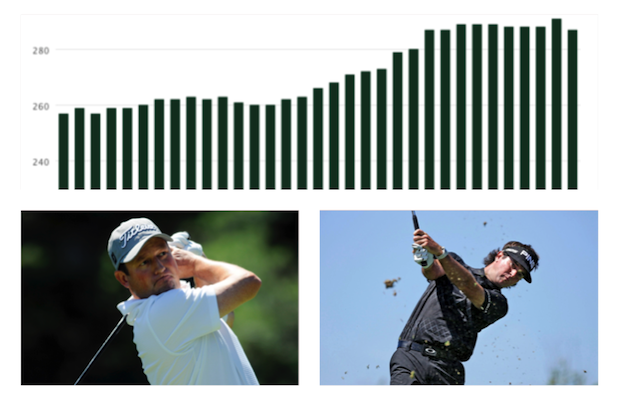
As a statistician who works with PGA Tour players, I’m frequently asked by aspiring Tour players and their coaches what statistics they can use to measure themselves against Tour players.
The mistake with this question is that the playing grounds for aspiring Tour players and actual PGA Tour players are often different. In fact, metrics on the PGA Tour can change drastically from one event to another. For instance, the average make percentage of putts from 3-to-5 feet for the year is roughly 87 percent. At the AT&T Pebble Beach National Pro-Am, however, the average make percentage for professionals from 3-to-5 feet was only 76 percent. Thus, a golfer that made 80 percent of their putts from 3-to-5 feet would be putting poorly on many Tour courses, but doing better than average at Pebble Beach. And the same applies for shot proximity to the cup. Some courses are easier than others and for aspiring Tour players. It is not easy to gauge their performance versus the PGA Tour players performance since it depends on the degree of difficulty of the course.
Don’t get me wrong. I do think that using PGA Tour benchmarks can be useful, but expecting that they will provide golfers with an accurate depiction of how the average Tour player would perform on a course is misleading at best. Instead, I advise golfers to focus on what I call their “game profile.” A game profile is various strengths and weaknesses of a golfer’s game. It’s how well they putt, drive the ball, what happens when they drive it effectively or ineffectively, how well they hit their short approach shots, mid-length approach shots and long approach shots and how well they perform with their short game around the green.
The game profile starts with power and how far a golfer hits the ball off the tee. How far a golfer hits the ball dictates what the rest of their game will generally have to look like in order to achieve success. But first, what we should understand is that the biggest advantage to hitting the ball far is that it affects how well golfers will have to putt the ball. And the farther a golfer hits the ball, the more likely he or she can get away with poor putting. Here is a chart showing many of the super-long hitters on Tour and their 2013 PGA Tour performance in money, driving distance and the strokes gained – putting categories.
Conversely, here’s a look at the shorter hitters on Tour that were successful and their rankings.
The biggest reason why the long hitters can get away with weaker putting is that they often have the distance to play the par-5’s in two shots like they are par-4’s. And they are getting more birdie opportunities on those holes, because they’re often hitting it closer to the cup.
The problem with using distance for the aspiring Tour player is that virtually every golfer who tells me how far they hit the ball will give me a number of when they hit the ball the best without the weather conditions affecting their distance. Even Tour players do not consistently make great contact with the ball and are far from being overly consistent with how far they hit their driver.
And that is where launch monitors can help. In 2013, the average club head speed on Tour was 113.6 mph. The highest club head speed was 124.5 mph by Charlie Beljan, and the lowest was 104.7 mph by Jin Park. These numbers should give an initial indication of how much power a golfer has compared to the Tour.
Another important factor to consider is the attack angle. I am not trying to advocate any particular attack angle for a golfer. We know that all things being equal, the more golfers hit up on the ball with a well-fit driver the farther the ball will travel. Therefore, if a golfer has a very downward attack angle, but generates 113.6 mph of club head speed, he or she is effectively now as powerful off the tee as a golfer that may have less club head speed, but hits well up on the driver.
Lastly, we need to consider the Apex Height. The average apex height of a Tour player in 2013 was 96.9 feet. The highest was 131.7 feet by Jason Day. And the lowest apex height was 67.5 feet from Scott Langley. There is a statistical correlation between a player’s apex height and success on Tour. While it is not a strong mathematical correlation, it is substantial enough that it warrants attention. Obviously, golfers with higher club head speeds generally will hit the ball higher, but there are many low club head speed players that hit the ball high and have had resounding success like Brandt Snedeker, Ben Crane, Mark Wilson and Luke Donald, to name a few. What my research has uncovered is that there are too many courses on Tour that favor golfers with higher ball trajectories. I attribute this to the modern course designs, which have more forced carries than older courses.
Once a golfer gets their club head speed and attack angle readings, they can start to determine how much power they have off the tee compared to the rest of the Tour. And for any player, I generally recommend a goal of keeping their fairway bunkers hit to under 5 percent (roughly one fairway bunker hit every other round). As far as hitting the fairways goes, it is rather simple. The farther golfers hit the ball, the lower percentage of fairways they have to hit. Here is a chart of the recommended goal of fairway percentage hit based on club head speed in order to be effective off the tee:
When we examine the table showing the successful lower club head speed players and putting combined with the recommended fairway percentages by club head speed table, we start to see that it becomes virtually impossible to make the PGA Tour if you cannot generate at least 104 mph of club head speed. Once a golfer gets below 104 mph, it requires them to hit such a high percentage of fairways and to putt so incredibly well that they are going to have a hard time keeping their card because golfers can only be so accurate and putt so well.
This leads into power and its influence on the game profile and the player’s ability to hit approach shots. I break down approach shots into three different zones:
- Birdie Zone (shots from 75-to-125 yards)
- Safe Zone (shots from 125-to-175 yards)
- Danger Zone (shots from 175-to-225 yards)
In general, the Danger Zone is the most important zone in golf. In fact, it has the strongest mathematical correlation to success on Tour. Regardless of club head speed, the player’s performance on Tour is largely dictated by how well they play from the Danger Zone. And there is not a substantial correlation between club head speed and Danger Zone play.
My research leads me to believe that this is because the Danger Zone shots requires golfers to have directional and distance control, whereas shots from the Birdie and Safe Zones are more distance-control oriented. The angle for error from the Danger Zone diminishes because it is such a long shot. So while generating more club head speed will have golfers hitting shorter clubs from the Danger Zone, the angle of error diminishes so much that golfers with slower club head speeds like Jim Furyk, Zach Johnson, Luke Donald and Graeme McDowell can get the advantage because of their superior directional control from this zone.
What often happens with the long hitters is that they may not actually be that skillful with their irons, but still rank well from the Danger Zone. This is because most of their Danger Zone shots are coming on the Par-3’s. When the rest of the field is playing a long par-4 and can only manage to leave themselves with 175-to-225 yard shots into the green, the long bombers can hit their drives to 125-to-175 yards. This is one of Bubba Watson’s strengths, because historically he has not been a good iron player. If there was a contest from 200 yards between Bubba and Jim Furyk, I would take Furyk. The difference is that in competition Bubba is hitting his approach shots from a much shorter distance than Furyk the majority of the time and that levels the playing field, or even gives the advantage to the lesser skilled iron player.
As I discussed earlier, the shorter hitters normally have to putt better because they cannot hit their second shots as close to the hole on the par-5’s as the long hitters. This also means that slower club head speed players need to hit it better from 100-to-150 yards in order to catchup to the rest of the field on those par-5’s. Shots from 100-125 yards are generally where the shorter hitter will end up laying up to. Even if their “money yardage” is less than 100 yards, the majority of the time they can only lay up to 100-to-125 yards. And if they hit a weaker tee shot, then their lay-up shot tends to move more towards 125-to-150 yards.
Here is a table showing some notable players’ 2013 ranking on shots from 100-to-125 yards and their club head speed with the driver.
If the higher club head speed players were better from 100-to-125 yards, it would have a positive impact on their performance. However, due to their high club head speed, performing well from 100-to-125 yards is a lower priority than it is for the lower club head speed players.
The game profiles are something that the average amateur can use as well. For example, golfers who play to a 10 handicap but hit the ball short for that handicap level and do not foresee themselves increasing their club head speed substantially in the future may want to follow the example set. There is a warning; the distance of the “Zones” changes for amateurs because they are playing shorter courses. So if golfers are playing courses that are roughly 6,000-to-6,300 yards, their ‘Danger Zone’ will about 150-to-200 yards and the Birdie Zone will be about 50-t0-100 yards. But the same game profile concept will remain the same.
The shorter-than-your-average-10 handicap player may want to work more on his putting, focus more on hitting more fairways and on his wedge play. The longer-than-your-average-10 handicapper may want to focus on keeping his drives in play more often so they can use that length to his advantage. This can help players from all levels take the path needed to shoot better scores.
Opinion & Analysis
The 2 primary challenges golf equipment companies face

As the editor-in-chief of this website and an observer of the GolfWRX forums and other online golf equipment discourse for over a decade, I’m pretty well attuned to the grunts and grumbles of a significant portion of the golf equipment purchasing spectrum. And before you accuse me of lording above all in some digital ivory tower, I’d like to offer that I worked at golf courses (public and private) for years prior to picking up my pen, so I’m well-versed in the non-degenerate golf equipment consumers out there. I touched (green)grass (retail)!
Complaints about the ills of and related to the OEMs usually follow some version of: Product cycles are too short for real innovation, tour equipment isn’t the same as retail (which is largely not true, by the way), too much is invested in marketing and not enough in R&D, top staffer X hasn’t even put the new driver in play, so it’s obviously not superior to the previous generation, prices are too high, and on and on.
Without digging into the merits of any of these claims, which I believe are mostly red herrings, I’d like to bring into view of our rangefinder what I believe to be the two primary difficulties golf equipment companies face.
One: As Terry Koehler, back when he was the CEO of Ben Hogan, told me at the time of the Ft Worth irons launch, if you can’t regularly hit the golf ball in a coin-sized area in the middle of the face, there’s not a ton that iron technology can do for you. Now, this is less true now with respect to irons than when he said it, and is less and less true by degrees as the clubs get larger (utilities, fairways, hybrids, drivers), but there remains a great deal of golf equipment truth in that statement. Think about it — which is to say, in TL;DR fashion, get lessons from a qualified instructor who will teach you about the fundamentals of repeatable impact and how the golf swing works, not just offer band-aid fixes. If you can’t repeatably deliver the golf club to the golf ball in something resembling the manner it was designed for, how can you expect to be getting the most out of the club — put another way, the maximum value from your investment?
Similarly, game improvement equipment can only improve your game if you game it. In other words, get fit for the clubs you ought to be playing rather than filling the bag with the ones you wish you could hit or used to be able to hit. Of course, don’t do this if you don’t care about performance and just want to hit a forged blade while playing off an 18 handicap. That’s absolutely fine. There were plenty of members in clubs back in the day playing Hogan Apex or Mizuno MP-32 irons who had no business doing so from a ballstriking standpoint, but they enjoyed their look, feel, and complementary qualities to their Gatsby hats and cashmere sweaters. Do what brings you a measure of joy in this maddening game.
Now, the second issue. This is not a plea for non-conforming equipment; rather, it is a statement of fact. USGA/R&A limits on every facet of golf equipment are detrimental to golf equipment manufacturers. Sure, you know this, but do you think about it as it applies to almost every element of equipment? A 500cc driver would be inherently more forgiving than a 460cc, as one with a COR measurement in excess of 0.83. 50-inch shafts. Box grooves. And on and on.
Would fewer regulations be objectively bad for the game? Would this erode its soul? Fortunately, that’s beside the point of this exercise, which is merely to point out the facts. The fact, in this case, is that equipment restrictions and regulations are the slaughterbench of an abundance of innovation in the golf equipment space. Is this for the best? Well, now I’ve asked the question twice and might as well give a partial response, I guess my answer to that would be, “It depends on what type of golf you’re playing and who you’re playing it with.”
For my part, I don’t mind embarrassing myself with vintage blades and persimmons chasing after the quasi-spiritual elevation of a well-struck shot, but that’s just me. Plenty of folks don’t give a damn if their grooves are conforming. Plenty of folks think the folks in Liberty Corner ought to add a prison to the museum for such offences. And those are just a few of the considerations for the amateur game — which doesn’t get inside the gallery ropes of the pro game…
Different strokes in the game of golf, in my humble opinion.
Anyway, I believe equipment company engineers are genuinely trying to build better equipment year over year. The marketing departments are trying to find ways to make this equipment appeal to the broadest segment of the golf market possible. All of this against (1) the backdrop of — at least for now — firm product cycles. And golfers who, with their ~15 average handicap (men), for the most part, are not striping the golf ball like Tiger in his prime and seem to have less and less time year over year to practice and improve. (2) Regulations that massively restrict what they’re able to do…
That’s the landscape as I see it and the real headwinds for golf equipment companies. No doubt, there’s more I haven’t considered, but I think the previous is a better — and better faith — point of departure when formulating any serious commentary on the golf equipment world than some of the more cynical and conspiratorial takes I hear.
Agree? Disagree? Think I’m worthy of an Adam Hadwin-esque security guard tackle? Let me know in the comments.
@golfoncbs The infamous Adam Hadwin tackle ? #golf #fyp #canada #pgatour #adamhadwin ? Ghibli-style nostalgic waltz – MaSssuguMusic
Podcasts
Fore Love of Golf: Introducing a new club concept

Episode #16 brings us Cliff McKinney. Cliff is the founder of Old Charlie Golf Club, a new club, and concept, to be built in the Florida panhandle. The model is quite interesting and aims to make great, private golf more affordable. We hope you enjoy the show!
Opinion & Analysis
On Scottie Scheffler wondering ‘What’s the point of winning?’

Last week, I came across a reel from BBC Sport on Instagram featuring Scottie Scheffler speaking to the media ahead of The Open at Royal Portrush. In it, he shared that he often wonders what the point is of wanting to win tournaments so badly — especially when he knows, deep down, that it doesn’t lead to a truly fulfilling life.
View this post on Instagram
“Is it great to be able to win tournaments and to accomplish the things I have in the game of golf? Yeah, it brings tears to my eyes just to think about it because I’ve literally worked my entire life to be good at this sport,” Scheffler said. “To have that kind of sense of accomplishment, I think, is a pretty cool feeling. To get to live out your dreams is very special, but at the end of the day, I’m not out here to inspire the next generation of golfers. I’m not out here to inspire someone to be the best player in the world, because what’s the point?”
Ironically — or perhaps perfectly — he went on to win the claret jug.
That question — what’s the point of winning? — cuts straight to the heart of the human journey.
As someone who’s spent over two decades in the trenches of professional golf, and in deep study of the mental, emotional, and spiritual dimensions of the game, I see Scottie’s inner conflict as a sign of soul evolution in motion.
I came to golf late. I wasn’t a junior standout or college All-American. At 27, I left a steady corporate job to see if I could be on the PGA Tour starting as a 14-handicap, average-length hitter. Over the years, my journey has been defined less by trophies and more by the relentless effort to navigate the deeply inequitable and gated system of professional golf — an effort that ultimately turned inward and helped me evolve as both a golfer and a person.
One perspective that helped me make sense of this inner dissonance around competition and our culture’s tendency to overvalue winning is the idea of soul evolution.
The University of Virginia’s Division of Perceptual Studies has done extensive research on reincarnation, and Netflix’s Surviving Death (Episode 6) explores the topic, too. Whether you take it literally or metaphorically, the idea that we’re on a long arc of growth — from beginner to sage elder — offers a profound perspective.
If you accept the premise literally, then terms like “young soul” and “old soul” start to hold meaning. However, even if we set the word “soul” aside, it’s easy to see that different levels of life experience produce different worldviews.
Newer souls — or people in earlier stages of their development — may be curious and kind but still lack discernment or depth. There is a naivety, and they don’t yet question as deeply, tending to see things in black and white, partly because certainty feels safer than confronting the unknown.
As we gain more experience, we begin to experiment. We test limits. We chase extreme external goals — sometimes at the expense of health, relationships, or inner peace — still operating from hunger, ambition, and the fragility of the ego.
It’s a necessary stage, but often a turbulent and unfulfilling one.
David Duval fell off the map after reaching World No. 1. Bubba Watson had his own “Is this it?” moment with his caddie, Ted Scott, after winning the Masters.
In Aaron Rodgers: Enigma, reflecting on his 2011 Super Bowl win, Rodgers said:
“Now I’ve accomplished the only thing that I really, really wanted to do in my life. Now what? I was like, ‘Did I aim at the wrong thing? Did I spend too much time thinking about stuff that ultimately doesn’t give you true happiness?’”
Jim Carrey once said, “I think everybody should get rich and famous and do everything they ever dreamed of so they can see that it’s not the answer.”
Eventually, though, something shifts.
We begin to see in shades of gray. Winning, dominating, accumulating—these pursuits lose their shine. The rewards feel more fleeting. Living in a constant state of fight-or-flight makes us feel alive, yes, but not happy and joyful.
Compassion begins to replace ambition. Love, presence, and gratitude become more fulfilling than status, profits, or trophies. We crave balance over burnout. Collaboration over competition. Meaning over metrics.
Interestingly, if we zoom out, we can apply this same model to nations and cultures. Countries, like people, have a collective “soul stage” made up of the individuals within them.
Take the United States, for example. I’d place it as a mid-level soul: highly competitive and deeply driven, but still learning emotional maturity. Still uncomfortable with nuance. Still believing that more is always better. Despite its global wins, the U.S. currently ranks just 23rd in happiness (as of 2025). You might liken it to a gifted teenager—bold, eager, and ambitious, but angsty and still figuring out how to live well and in balance. As much as a parent wants to protect their child, sometimes the child has to make their own mistakes to truly grow.
So when Scottie Scheffler wonders what the point of winning is, I don’t see someone losing strength.
I see someone evolving.
He’s beginning to look beyond the leaderboard. Beyond metrics of success that carry a lower vibration. And yet, in a poetic twist, Scheffler did go on to win The Open. But that only reinforces the point: even at the pinnacle, the question remains. And if more of us in the golf and sports world — and in U.S. culture at large — started asking similar questions, we might discover that the more meaningful trophy isn’t about accumulating or beating others at all costs.
It’s about awakening and evolving to something more than winning could ever promise.








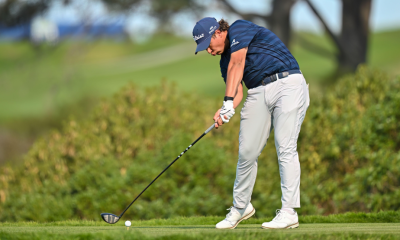

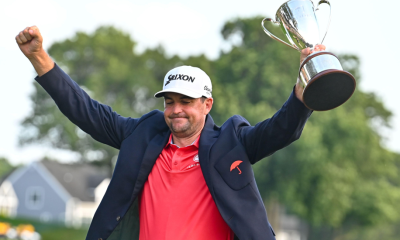



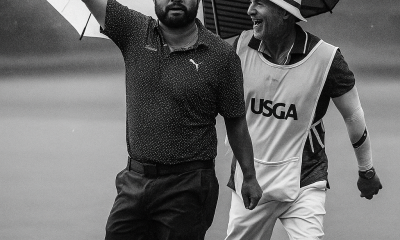

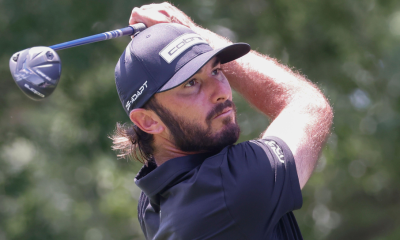









Hudson
Apr 2, 2014 at 4:58 pm
I have recently calculated on a full round of 18 holes the gained/lost strokes compared to a PGA pro and based on the “gained stokes concept” implemented by Mr Broadie.
Let me share with you my results that will interest quite a few of you down here 😉
The great advantage of the method is that it quantifies the number of strokes you loose on each part of your game. I found this new concept a revolution ! I for example can now focus on my long game (>165 yards)of my game where I “lost” 6 strokes last week…
See below the complete calculations and explanations I made:
http://golf-made-in-us.blogspot.com/2014/04/golf-stats-revolution-gained-strokes.html
Mike
Mar 14, 2014 at 10:33 am
Great read, thanks for posting it. One question: are those tour statistics readily available for the average person to see?
Peter Maki
Mar 14, 2014 at 1:48 am
Great article. As a mechanical engineer aspiring to play professionally I enjoy reading this technical analysis type stuff. Keep it up!
RollTheRock
Mar 13, 2014 at 10:29 am
Great article, but how do I know if I am a “shorter than average 10-hcp”? Do you have a table with average distance per handicap?
RollTheRock
Mar 13, 2014 at 10:50 am
As a follow up, if you are a shorter than average 10, and you improve upon the other aspects of your game, your handicap will drop, making you a significantly shorter than average 6 or wherever you get to. It almost seems like there is an implied floor to how low your handicap can within reason based on distance off the tee. If you hit the ball 250, which is average for let’s say a 10hcp, and get down to a 5, to improve further assuming you can’t get any more distance off the tee, you would have to become incredibly accurate or an amazing putter. It would be awesome if there was some way to quantify this. A chart or data that says to be a scratch golfer with an average distance of 250yds off the tee, you would typically have to hit x% of fwys, gain y strokes from the danger zone, and gain z strokes putting. And then perhaps be able to play with x, y and z. For instance, I can hit x% of fairways but I don’t gain enough strokes in the danger zone, however I can gain z+ strokes putting.
Sorry for the nerd rant, but that would be cool.
Philip
Mar 13, 2014 at 11:53 am
I second the request for that info, if available. Definitely would be cool to have!
Richie Hunt
Mar 13, 2014 at 1:47 pm
That was one of the parts I struggled with. There were some researchers from Australia that did research and found that handicap and club head speed do have a very strong correlation to each other. They did a regression analysis to come up with a handicap to ball speed analysis, but I could not get the formula to compute correctly. Something I am working on.
anonymous
Mar 14, 2014 at 9:57 am
http://www.nytimes.com/2008/07/21/sports/golf/21pennington.html?pagewanted=all&_r=0
This is a related article on what to work on based on statistical analysis.
Basically, you take your fractional remaining length (distance remaining to target / total distance from original spot). If your FRL is ~5-6% you should be hitting it 297 yards, ~8-9% 248 yards, ~12% 237 yards, 17.3% 216 yards. If you hit it farther, work on your short game, if you hit it shorter work on your long game.
joe sixpack
Mar 13, 2014 at 12:02 am
This is definitely better than your article last August about whether Trackman is ruining golf.
I have 2 beefs with this.
First, the title. “Statistics & Launch Monitor Data”. The only launch monitor data you use in this article is club head speed. All of the rest of the data is from Shotlink. You mention that it’s important to hit up on a driver and it helps to hit a high ball, but you give no analysis or data on these issues. When I clicked on this story, I was expecting something about Trackman and all of the awesome data it provides. I felt teased.
Second, what is your main point? Shorter hitters need to be straighter drivers, better wedge players and better putters to compete with longer hitters? Duh! Do you need to crunch a bunch of data to convince people of that?
The structure of this article is also a bit of a mess.
Here’s an outline of your article:
– Tour averages vary from course to course. (So what? This has nothing to do with the rest of your article.)
– Pros need to look at their individual strengths and weaknesses.
– The longer you hit the ball, the worse you can be at putting and still compete.
– Shorter hitters that succeed on tour are good putters.
– Launch monitors help you maximize distance for a given swing speed.
– Longer hitters don’t have to hit as many fairways to be competitive.
– Longer hitters have shorter and easier approach shots.
Your argument boils down to this: longer hitters have an advantage. No one will argue with that. Tell us something interesting.
Richie Hunt
Mar 13, 2014 at 9:12 am
I used more than just club head speed. I discussed attack angle and also used Apex Height of the ball. I also never discussed ‘launch monitors help you maximize distance for a given club head speed.’ The article does not recommend any particular attack angle, but it discusses power, how to more accurately measure it and understand how this will impact the rest of yoru game.
Lastly, long hitters do not always have easier approach shots. If they are in the fairway bunker or deep rough or the trees, that’s not the case. That’s why long hitters rarely win at Sawgrass (Tiger won last year, but was hitting 3-wood on virtually every hole). As I stated in the article, they are likely to have more easier shots into par-5’s. However, they still have to keep the ball on the grid. A player like Luke List didn’t stand a chance last year despite being the longest player on Tour because he couldn’t keep the ball in play.
Mike
Mar 13, 2014 at 10:38 am
+1 on this. I was expecting some analysis on swing speed vs. ball speed or something…
Richie Hunt
Mar 13, 2014 at 1:45 pm
I tend to avoid using ball speed because there are many factors to ball speed and often times the ball speed measurement is not quite accurate. I also think that the average golfer relates more to club head speed than they do ball speed.
Tom Stickney
Mar 12, 2014 at 10:49 pm
Awesome analysis…big fan of your work.
Dan
Mar 12, 2014 at 10:38 pm
Well written and insightful article Richie. I especially liked the club head speed and recommended fairway percentage. I’ll definitely be able to apply that when looking over my own stats. Keep the great articles coming! Cheers.
marcel
Mar 12, 2014 at 6:49 pm
what a brilliant article. great research and great write up.
Philip
Mar 12, 2014 at 5:42 pm
Awesome! Helps me know what to focus on this spring to maximize my game fast.
joselo
Mar 12, 2014 at 4:55 pm
this is not helping settin down my golf addiction; great article!
Travis
Mar 12, 2014 at 4:50 pm
These types of articles with statistics are more informative for me. It breaks down the stereotype of trying to hit it farther. For a recreational golfer like myself, we constantly read articles and see commercials on how to hit it far just to have bragging rights. This article just proves how hitting it far is not always a good thing to do.
Richie Hunt
Mar 12, 2014 at 5:15 pm
Thanks for the kind words. I think my main point is that there are more than one way to shoot better scores and to understand what power does for a golfer’s game. If you are legitimately able to add 25 yards to your game and still be fairly consistent doing so, I would certainly take it. But if you can’t legitimately add substantial power and you hit it short, you need to look at putting better and hitting your wedges better while finding more fairways.
W
Mar 12, 2014 at 4:29 pm
Love the plethora of information, kudos to the author. Another way to analyze our games and take them to the next level…..
The dude
Mar 12, 2014 at 2:05 pm
Love this stuff !!!!….bring more (on puttin %)
8thehardway
Mar 12, 2014 at 12:01 pm
Fascinating! As a shorter-than-average 8 handicapper, I’ll always lack the go-low potential of longer hitters but as long as my up & downs are roughly equal to the GIRs I’m giving away straight drives and short game focus let me compete with friends 20 years younger and 30 yards longer. And when I can depend on my short game, there is less pressure to attempt a high trajectory, 180 yard approach shot; in effect, I can shrink the danger zone on a hole-by-hole basis by playing to my strengths rather than gambling on my weakness.
jon olson
Mar 12, 2014 at 11:12 am
this is an exceptionally well written article. one of the best i have seen on dictating the correlation between the PGA tour courses, the skill set they demand and the strengths and weaknesses of each individual player on tour. excellent read for coaches and players alike!
Evan
Mar 12, 2014 at 10:36 am
There is obviously a Long game/ Short game teeter-totter effect. Do you think this has something to do with the nature of golf and it’s equipment? I often think that these long hitters would benefit from a balanced approach to their swings and equipment. More 43″/ 100 g shafted drivers in the hands of the high swing speed players would increase their consistency (not as big of difference in feel from driver to irons).
The driver swing is different than the iron/ wedge swing… is it a coincidence that no one does both really well?